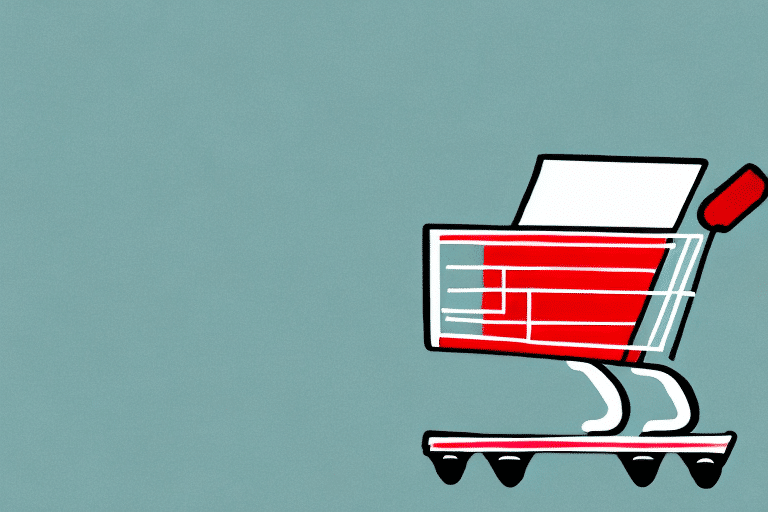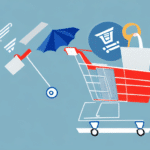How to Reduce Cart Abandonment on Shopify
As an online retailer, few things are more frustrating than seeing a potential customer add items to their shopping cart, only to abandon it at the last minute. Unfortunately, cart abandonment is a common occurrence in the world of ecommerce, and it can happen to even the most successful businesses. However, there are steps you can take to prevent this from happening and increase the chances that shoppers will complete their purchases. In this article, we will explore various strategies and techniques for reducing cart abandonment on Shopify.
Understanding Cart Abandonment
Causes of Cart Abandonment
Before addressing cart abandonment, it's essential to understand its underlying causes. Common reasons include:
- Unexpected additional costs, such as shipping or taxes
- Lack of payment options
- Complicated checkout processes
- Poor website design and navigation
- Concerns about security
For instance, customers may be deterred by hidden fees disclosed only at checkout. Transparency about costs from the beginning can mitigate this issue. Additionally, a user-friendly website design with intuitive navigation helps keep customers engaged throughout their shopping journey.
Effects of Cart Abandonment
Cart abandonment can significantly impact your business by:
- Leading to lost sales and revenue
- Decreasing customer loyalty
- Damaging your brand reputation
Addressing the causes of cart abandonment is crucial to sustaining and growing your ecommerce business.
Analyzing Your Shopify Store's Cart Abandonment Rate
Using Shopify Analytics
The first step in reducing cart abandonment is to understand your current rate. Shopify provides comprehensive analytics that help track the number of abandoned carts and identify potential problem areas. By analyzing these metrics, you can pinpoint stages in the checkout process where customers are dropping off.
Identifying Problem Areas
Once you know your cart abandonment rate, develop a plan to address specific issues. For example, if a significant number of shoppers abandon their carts during the payment step, you might need to simplify the payment process or offer more payment options.
According to a Baymard Institute study, the average cart abandonment rate is around 70%, highlighting the importance of tackling this issue effectively.
Optimizing Your Checkout Process
Streamlining Checkout Steps
A straightforward and hassle-free checkout process is essential for reducing cart abandonment. Consider the following optimizations:
- Reduce the number of form fields required
- Implement a progress indicator to show checkout stages
- Provide a summary of the customer's order before finalizing the purchase
These changes can make the checkout process more efficient and less intimidating for customers.
Offering Multiple Payment Options
Customers have diverse preferences when it comes to payment methods. Offering a variety of options such as credit cards, PayPal, Apple Pay, and other digital wallets can enhance the convenience of the checkout process and increase the likelihood of a successful purchase.
Ensuring Mobile-Friendly Checkout
With the increasing number of shoppers using mobile devices, it's crucial to ensure that your checkout page is mobile-friendly. A responsive design that adapts to different screen sizes can improve the user experience and reduce cart abandonment rates.
Marketing Strategies to Recover Abandoned Carts
Implementing Exit-Intent Popups
Exit-intent popups are a powerful tool for preventing cart abandonment. These popups appear when a user attempts to leave your site, offering incentives to stay and complete their purchase. Effective incentives include:
- Free shipping
- Discount codes
- Reminders of items in their cart
However, use popups sparingly to avoid annoying users. Personalize the offers based on the user's behavior for better effectiveness.
Utilizing Email Marketing
Email marketing is an effective way to remind customers of their abandoned carts and encourage them to return and complete their purchase. Shopify allows you to create automated email campaigns that send follow-up emails to customers who have left items in their cart. These emails can include:
- Personalized messages addressing the customer by name
- Details of the abandoned items
- Incentives such as discount codes or free shipping offers
According to a Salehoo report, email is the most effective strategy for recovering abandoned carts, yielding a return on investment (ROI) of 4200%.
Offering Discounts and Promotions
Discount codes and promotions can motivate shoppers to complete their purchases. Strategies include:
- Offering a percentage off their order
- Providing free shipping
- Implementing buy-one-get-one deals
Be strategic about when and how you offer discounts. For example, targeting customers who have previously abandoned their carts can improve the effectiveness of your promotions.
Building Trust and Utilizing Social Proof
Clear Shipping and Returns Policies
Providing transparent shipping and returns policies builds trust with customers. Ensure that your policies are:
- Easy to understand
- Prominently displayed on your website
- Include information about shipping times, costs, and any restrictions
A straightforward returns process also reassures customers, making them more likely to complete a purchase.
Enhancing Product Descriptions and Images
Compelling product descriptions and high-quality images are crucial for converting shoppers into buyers. Ensure that your product descriptions:
- Are clear and informative
- Highlight unique features and benefits
- Use persuasive language to encourage action
Use high-resolution images that showcase your products from various angles, including close-up details. According to a Shopify study, high-quality images can significantly boost conversion rates.
Integrating Reviews and Testimonials
Customer reviews and testimonials provide social proof that can influence purchasing decisions. Displaying reviews, ratings, and user-generated content such as customer photos can enhance credibility and build trust.
Consider integrating apps like Klaviyo or Yotpo to manage and showcase customer feedback effectively.
Continuous Improvement and Testing
A/B Testing Strategies
There is no one-size-fits-all solution to reducing cart abandonment. Conduct A/B tests on different aspects of your checkout process, offers, and email campaigns to determine what works best for your audience. For example, you can test:
- Different discount offers
- Variations in email subject lines
- Different popup designs and messages
Use Shopify's built-in analytics or tools like Optimizely to track the performance of your tests.
Tracking and Analyzing Success
Regularly monitor your cart abandonment rates and the effectiveness of your strategies using Shopify analytics and other tracking tools. Key metrics to track include:
- Cart abandonment rate
- Recovery rate of abandoned carts
- Conversion rates post-implementation of strategies
Use this data to make informed decisions and refine your approaches continually.
Conclusion
Reducing cart abandonment on your Shopify store is crucial for increasing sales and retaining customer loyalty. By implementing the strategies and tactics outlined above, you can streamline your checkout process, build customer trust, create a sense of urgency, and incentivize purchases. Remember, reducing cart abandonment is an ongoing process that requires constant monitoring and adjustment. By taking a data-driven and customer-centric approach, you can increase the likelihood of a sale and ensure the long-term success of your ecommerce business.




















